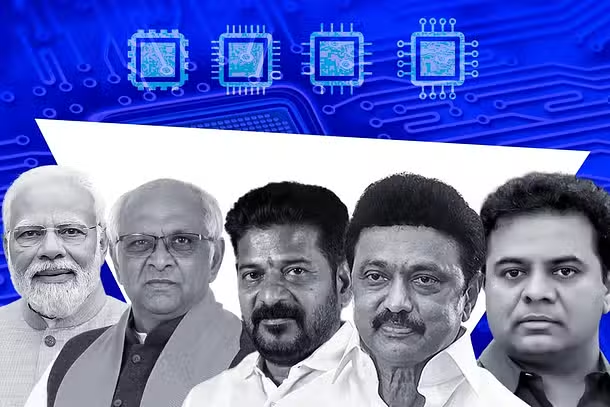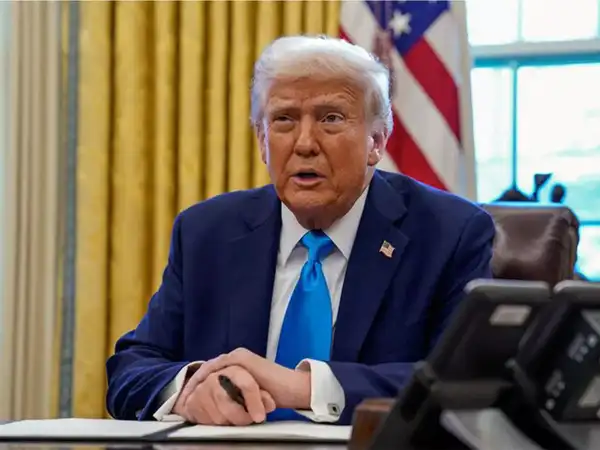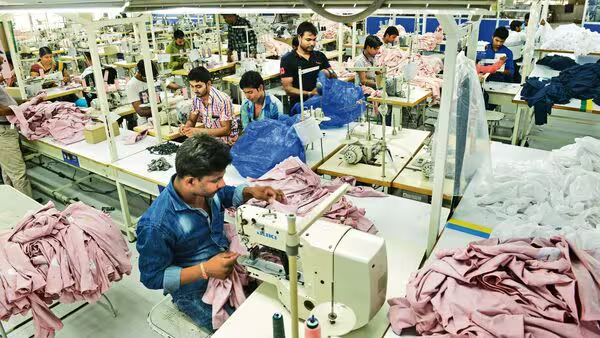Hey, like this? Why not share it with a buddy?

Those unhappy with industries moving to Gujarat should know that long term political stability and ‘double engine sarkar’ could trump incentives. The announcement by Kaynes Technology to build its chipmaking plant in Gujarat’s Sanand, instead of Telangana as planned earlier has set off a debate: is the Central Government favoring Gujarat over other states? “Prime Minister Narendra Modi is helping his home State by drawing industries away from elsewhere” is the feeling expressed by those unhappy with the decision. This is, however, not the first time that such things are being said. It happened previously when the Vedanta-Foxconn joint venture, which announced a semiconductor project in Maharashtra, decided to change the location to Gujarat. (Foxconn later pulled out of the partnership.) While a similar debate of late in Tamil Nadu has mostly been over whether a plan by the Tata Group to set up semiconductor manufacturing near Coimbatore was scuttled by the Central Government and the BJP unit in the State, the same feeling has been aired by Chief Ministers, Revanth Reddy, M K Stalin, and K Taraka Rama Rao (KTR), the former Information Technology Minister of Telangana. Referring to the announcement by Kaynes, KTR posted that his Government brought it to Telangana from Karnataka by putting in a lot of effort and that he was saddened by the company’s decision. It is not known as to what exactly made Kaynes decide to choose Gujarat for its chipmaking plant, just days after inaugurating its electronics manufacturing facility near Hyderabad. Whether it was due to political pressure, as alleged by some, or because the State already has a number of semiconductor investments, such as by Micron, Tata Electronics, and CG Power, critics of these industry moves have to understand that incentives and measures such as help in speedy land allotment (as mentioned by KTR) are only a part of the equation.
Companies looking to invest large sums of money, like in the case of chip manufacturing units, which involve commitments of thousands of crores of rupees, are also looking for political stability in the long term. Whether Tamil Nadu or Telangana like it or not, Gujarat offers that.
Gujarat has what you might call the best example of the Bharatiya Janata Party’s (BJP) much-touted ‘double-engine sarkar model’ and boasts of a good track record in helping industry flourish. Sanand, for example, is where PM Modi famously brought in Tata Motors when it was looking for an exit from West Bengal after its Nano car factory faced opposition from the Trinamool Congress. While the Dravida Munnetra Kazhagam (DMK) Government in Tamil Nadu has also been able to get in some notable investments, like the electric vehicle factory by Vinfast, and has even gone out of its way in this regard (Industries Minister T R B Rajaa himself drove the car while travelling with Foxconn chairman Young Liu to the newly constructed housing facility), some unpleasant memories do remain. The chief among them are the protests against the Sterlite copper factory in Thoothukudi and the opposition to the Salem-Chennai expressway. Coming to Telangana, it now has a Government by the Congress, which doesn’t have a great record, when it comes to ease of doing business. What also does not help is the fact that it keeps criticizing Adani and Ambani in its quest to take on the Central Government led by the BJP. Gujarat, on the other hand, has done well, even during the United Progressive Alliance era. Apart from political stability due to the BJP being in power at the Centre and the State, it has a government as well as a society that is welcoming of business, which is something that is helping it to tip the scales in its favor once again.









